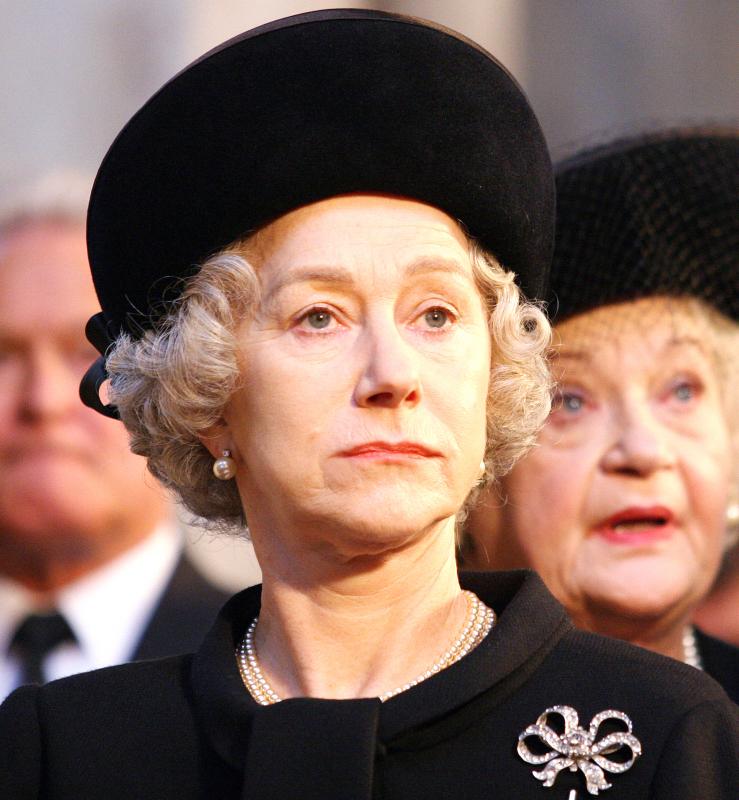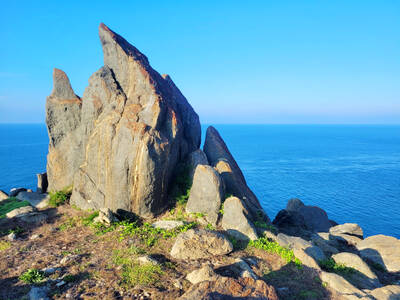Nobody is quite what they seem. And actors? Well, for actors that’s the job. Dame Helen Mirren, as well as being herself for 76 years, has by now notably been Lady Macbeth, a London gangster’s moll, a thief’s wife, an alcoholic cop, an action hero, Prospero and also a British monarch at least four times. Now she takes on Golda Meir, the late prime minister of Israel, in a new biopic, and the casting has caused controversy.
The choice of a non-Jewish actor to star as a woman with such a prominent place in the history of Israel has prompted irritation on both sides of the argument. Another illustrious dame, Maureen Lipman, was first to raise the issue — or “blast” Mirren, according to some reports last week — and then Dame Esther Rantzen defended the director’s choice. It is the latest instance of a ‘Jewface’ row, a backlash to the assignment of a major Jewish role to someone not from that minority background.
But the list of things that Mirren is not is long, and it does not necessarily start with not Jewish. For openers, she is not of English descent. She was born Illiana Lydia Petrovna Mironova into emigre Russian aristocracy in 1945 in Chiswick. This means that her Oscar-nominated role as Leo Tolstoy’s wife Sofya in the 2009 film The Last Station may be the closest to her own natural type. Certainly, she is not the bun-baking, clothes-shedding Yorkshire woman she played in the 2003 hit Calendar Girls.

Photo: AP
In fact, her great grandmother was a White Russian countess and her grandfather, Tsarist officer Pyotr Vassili Mironov, was caught in London, where he had been negotiating an arms deal, after the Bolshevik revolution and was permanently separated from his funds.
Mirren’s father was a taxi driver and mother the 13th child of an East End butcher. As a result the actor sees her family as “Chekhovian” displaced gentry, rather than one of Tolstoy’s elite.
“I grew up in a middle-class family who were living in a working-class economic situation,” she has explained.

Photo: AP
As a Catholic schoolgirl alongside her sister Kate in Leigh-on-Sea in Essex, the family Russianness became “an awkward thing you didn’t mention,” Mirren has recalled, although both daughters still have what they call “our soulful Russian moments.”
To please her father, Mirren went to teaching college, but also won a place with the National Youth Theater. Working at both, she quietly hoped the stage training would pay off first. It did. As a rising star at the Royal Shakespeare Company in the 60s, Mirren played Lady Macbeth in 1974 and was duly dubbed Sex Queen of Stratford.
Her often provocative film career kicked off in 1969 with The Age of Consent, in which she was the young object of desire for James Mason. But the long path to stardom she has since followed was far from certain.
“When I started acting I felt like I didn’t fit in to the Zeitgeist, if that’s the right word, of British theatrical culture,” she has said. “I wasn’t an ‘English Rosey’ sort of person.”
Last week Mirren kept her own counsel on the Jewface dispute, but it is an issue that soon took some illuminating, even amusing turns. Speaking on BBC Radio 4 on Friday, David Baddiel and Lipman examined the case and largely concurred.
“Actors should be allowed to act,” said Baddiel, “But if there is now outrage about casting against type, then why is there no outrage when it comes to Jews?”
The writer and comedian went on to point out a string of recent examples of casting non-Jewish actors in substantial Jewish roles, including Ruth Bader Ginsburg and Joan Rivers. The widespread notion that, to cite the title of Baddiel’s latest book, Jews don’t Count when it comes to fair representation, stems, he argues, from the fallacious and “ridiculous” belief there are so many Jews of influence in entertainment that it doesn’t matter.
Praising Mirren and predicting a “fine” performance as Meir, Lipman added that she also is opposed to the kind of “narrow casting” that would see parts matched up closely to an actor’s background and so prevent Benedict Cumberbatch playing a cowboy. Dame Maureen argued, nevertheless, that a Jewish actor should have been considered first and that a Jewish audience will recognize the difference.
“Hilda Schwarzkopf from Hendon will know,” she said. The putative Mrs Schwarzkopf has yet to comment.
It will not be the first leading Jewish role Mirren has played. In Woman in Gold, she was Maria Altmann, niece of the muse of Viennese painter Gustav Klimt. Altmann’s aunt, Adele Bloch-Bauer, had been the model for a famous 1907 portrait seized by a Nazi collector. In 2006, after a long legal case, the Klimt was returned to the family by the Austrian state and was sold for £73 million (US$99.2 million). Altmann, who died 10 years ago, donated money to arts institutions and Holocaust survivors’ groups.
“It was justice,” Mirren said at the time.
Not usually shy of expressing her views, Mirren has called for change in Hollywood, championing the career of black directors and publicly objecting to the surfeit of violence towards women on screen. In 2010 she ticked off an assembled group of Hollywood women, many of them powerful executives, for making films that chiefly served “the 18 to 25-year-old male and his penis.”
Happily, things have improved a little for women in the industry since the TV appearance Mirren infamously made at the age of 30 on Parkinson. The chat show host harped on about her physical attributes in a way that she now considers “outrageous.”
“I was terrified. I watched it and I actually thought, bloody hell! I did really well. I was so young and inexperienced. And he was such a fucking sexist old fart.”
Professionally Mirren has herself been accused of being drawn to the edges of acceptability, or perhaps to sheer naughtiness. You might have seen her on screen in Lindsay Anderson’s O Lucky Man! Or in the louche 1980 film Caligula. Before Prime Suspect’s Jane Tennison marched on to small screens in 1992, Mirren was probably still best known as Bob Hoskins’ uninhibited paramour in The Long Good Friday, a part she played when she was 35.
But at 44 she starred in Peter Greenaway’s The Cook, the Thief, His Wife & Her Lover, involving intimate scenes in a ladies’ loo. Then at 61 she played her first Queen Elizabeth, the Tudor one, in an HBO miniseries that got her properly noticed in America.
Her time as the current Queen, before it became normal for British actors to play Elizabeth II, came with the Stephen Frears film The Queen, which won her an Oscar in 2006. (For Americans, she noted, “You are, for the rest of your life, an Oscar winner. It’s like winning an honor here, it becomes part of your name.)
The actor does not like to repeat herself and has recounted a violent initial reaction to screenwriter Peter Morgan’s invitation to return to the part of Elizabeth on stage in his play The Audience.
“You bastard!” she recalled thinking, claiming Morgan had calculated she would not be able to resist. “How could I? And yet at the same time you don’t want to go backward; you really don’t want to be a one-trick pony. And when something has been as successful and as high profile as The Queen was, it’s a dangerous thing.”
It was all right, though. She won an Olivier for her portrayal.
Before Mirren met her husband, director Taylor Hackford, 35 years ago on the set of his 1985 film White Nights, her boyfriends were suitably glamorous. The Russian emigre Prince George Galitzine was on her arm in the 1970s and for a while in the 1980s she lived with “my darling Liam Neeson.”
It was he who Mirren said listened when she felt early pangs about aging.
“I remember getting very drunk and just sobbing because he was eight years younger than me: ‘It’s all over. It’s all very well for you, my career is about to come to an end and nobody will ever employ me again and in a few years’ time I will be finished.’”
Neeson, apparently, was “completely unsympathetic,” merely replying, “Ach, shut up.” Today it is evident just how right he was.

June 9 to June 15 A photo of two men riding trendy high-wheel Penny-Farthing bicycles past a Qing Dynasty gate aptly captures the essence of Taipei in 1897 — a newly colonized city on the cusp of great change. The Japanese began making significant modifications to the cityscape in 1899, tearing down Qing-era structures, widening boulevards and installing Western-style infrastructure and buildings. The photographer, Minosuke Imamura, only spent a year in Taiwan as a cartographer for the governor-general’s office, but he left behind a treasure trove of 130 images showing life at the onset of Japanese rule, spanning July 1897 to

One of the most important gripes that Taiwanese have about the Democratic Progressive Party (DPP) is that it has failed to deliver concretely on higher wages, housing prices and other bread-and-butter issues. The parallel complaint is that the DPP cares only about glamor issues, such as removing markers of Chinese Nationalist Party (KMT) colonialism by renaming them, or what the KMT codes as “de-Sinification.” Once again, as a critical election looms, the DPP is presenting evidence for that charge. The KMT was quick to jump on the recent proposal of the Ministry of the Interior (MOI) to rename roads that symbolize

On the evening of June 1, Control Yuan Secretary-General Lee Chun-yi (李俊俋) apologized and resigned in disgrace. His crime was instructing his driver to use a Control Yuan vehicle to transport his dog to a pet grooming salon. The Control Yuan is the government branch that investigates, audits and impeaches government officials for, among other things, misuse of government funds, so his misuse of a government vehicle was highly inappropriate. If this story were told to anyone living in the golden era of swaggering gangsters, flashy nouveau riche businessmen, and corrupt “black gold” politics of the 1980s and 1990s, they would have laughed.

It was just before 6am on a sunny November morning and I could hardly contain my excitement as I arrived at the wharf where I would catch the boat to one of Penghu’s most difficult-to-access islands, a trip that had been on my list for nearly a decade. Little did I know, my dream would soon be crushed. Unsure about which boat was heading to Huayu (花嶼), I found someone who appeared to be a local and asked if this was the right place to wait. “Oh, the boat to Huayu’s been canceled today,” she told me. I couldn’t believe my ears. Surely,